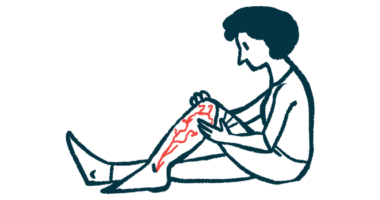Vutrisiran Continues to Show Promise to Lessen Heart Damage

Vutrisiran continues to show promise at lessening heart damage in adults with familial amyloid polyneuropathy (FAP) with cardiac involvement, according to exploratory new data from the ongoing Phase 3 HELIOS-A trial.
Data collected over 18 months of treatment in patients with pre-existing evidence of cardiac involvement showed that vutrisiran led to significant reductions in NT-proBNP, a marker of heart strain, when compared with an external placebo group. These benefits were also maintained when considering all patients who received vutrisiran at any point during HELIOS-A and made up the study’s modified intent-to-treat (mITT) group.
Vutrisiran-treated patients also showed a trend toward improvement in other echocardiographic parameters relative to the external placebo group.
“The exploratory cardiac findings from the HELIOS-A Phase 3 study are encouraging as they add to the growing body of data that suggest vutrisiran has the potential to help improve multiple aspects of the disease, including cardiac manifestations that can be life-threatening for these patients,” said Julian D. Gillmore, MD, PhD, from University College London, in a press release.
The data were shared in the presentation “HELIOS-A: 18-Month Exploratory Cardiac Results from the Phase 3 Study of Vutrisiran in Patients with Hereditary Transthyretin-Mediated Amyloidosis” at the annual congress of the Heart Failure Association of the European Society of Cardiology, which ran May 21–24 in Madrid.
Vutrisiran, an investigational therapy that Alnylam Pharmaceuticals is developing for FAP and similar disorders, works by lowering the production of transthyretin (TTR), the faulty protein that builds in peripheral nerves — those outside the brain and spinal cord — leading to nerve damage, or polyneuropathy, in people with FAP.
Compared with Onpattro (patisiran), an approved FAP therapy that is based on the same mechanism of action, vutrisiran is more stable, potentially allowing for longer-lasting effects, less frequent dosing, and lower healthcare costs.
HELIOS-A (NCT03759379) is investigating the safety and efficacy of vultrisiran. The study enrolled 164 FAP patients, who were randomly assigned to receive either vutrisiran (122 people) or Onpattro (42 people). Vutrisiran (25 mg) was administered as an under-the-skin injection every three months, while Onpattro (0.3 mg/kg), was administered directly into the bloodstream once every three weeks.
Patients who received a placebo in APOLLO (NCT01960348) — a previously completed Phase 3 trial whose findings supported Onpattro’s approval — were used as an external control group for HELIOS-A.
Previous data from HELIOS-A showed vutrisiran was significantly superior to placebo at lessening neurologic impairments, improving quality of life, and preserving patients’ walking abilities — meeting the trial’s main and secondary goals.
Newly announced data from the study have now showed that treatment with vutrisiran led to significant reductions in NT-proBNP levels compared with placebo, from the study’s start (baseline) to month 18. This was true in the overall mITT patient population, as well as in a smaller subgroup of patients with cardiac involvement.
Improvements in other echocardiographic parameters were also observed in vutrisiran-treated patients from both populations at month 18.
In a group of pre-selected patients that included those with a high burden of amyloid deposits in the heart, vutrisiran also reduced the heart’s uptake of the radioactive compound technetium after 18 months. Technetium is a radioactive molecule that strongly binds to TTR and is used as an imaging marker of disease burden in FAP patients. A reduction in its uptake suggests a lower amyloid burden in the heart.
The majority (96%) of patients remained stable or improved after 18 months of treatment. All 25 patients with moderate cardiac uptake (Perugini grade score 2 or higher) showed no increase in the heart’s uptake of technetium.
“While the full clinical significance of these findings requires further evaluation, the 18-month exploratory results from HELIOS-A continue to support the potential for vutrisiran to reduce amyloid burden in the heart and suggest that patients with a high degree of cardiac amyloid burden may benefit from this investigational RNAi therapeutic,” said Rena N. Denoncourt, vice president and TTR franchise lead at Alnylam.
At 18 months, vutrisiran has shown an acceptable cardiac safety profile. The majority of adverse events were mild or moderate in severity. Treatment discontinuations were seen in three cases: two deaths and one nonfatal heart failure. However, none of these were deemed to be related to vutrisiran.
Alnylam is also evaluating the safety and efficacy of vutrisiran and Onpattro to treat heart manifestations of ATTR amyloidosis, a group of disorders that also includes FAP, in HELIOS-B (NCT04153149) and APOLLO-B (NCT03997383).
“We look forward to seeing data from the APOLLO-B and HELIOS-B studies, which are investigating the efficacy and safety of patisiran and vutrisiran, respectively, to treat the cardiomyopathy of wild-type and hereditary ATTR amyloidosis. We are committed to bringing highly impactful therapeutic options to patients worldwide living with this progressive, multi-system and life-threatening disease,” Denoncourt said.
An open-label study, open to all patients who complete HELIOS-A, will continue to assess the efficacy of 25 mg of vutrisiran given once every three months, or 50 mg given once every six months for 1.5 years. This study is expected to conclude in May 2024.
Alnylam has submitted requests seeking the approval of vutrisiran for FAP in the U.S., Europe, Brazil, and Japan. A decision by the U.S. Food and Drug Administration (FDA) is expected by July 14, three months later than its original expected date.







